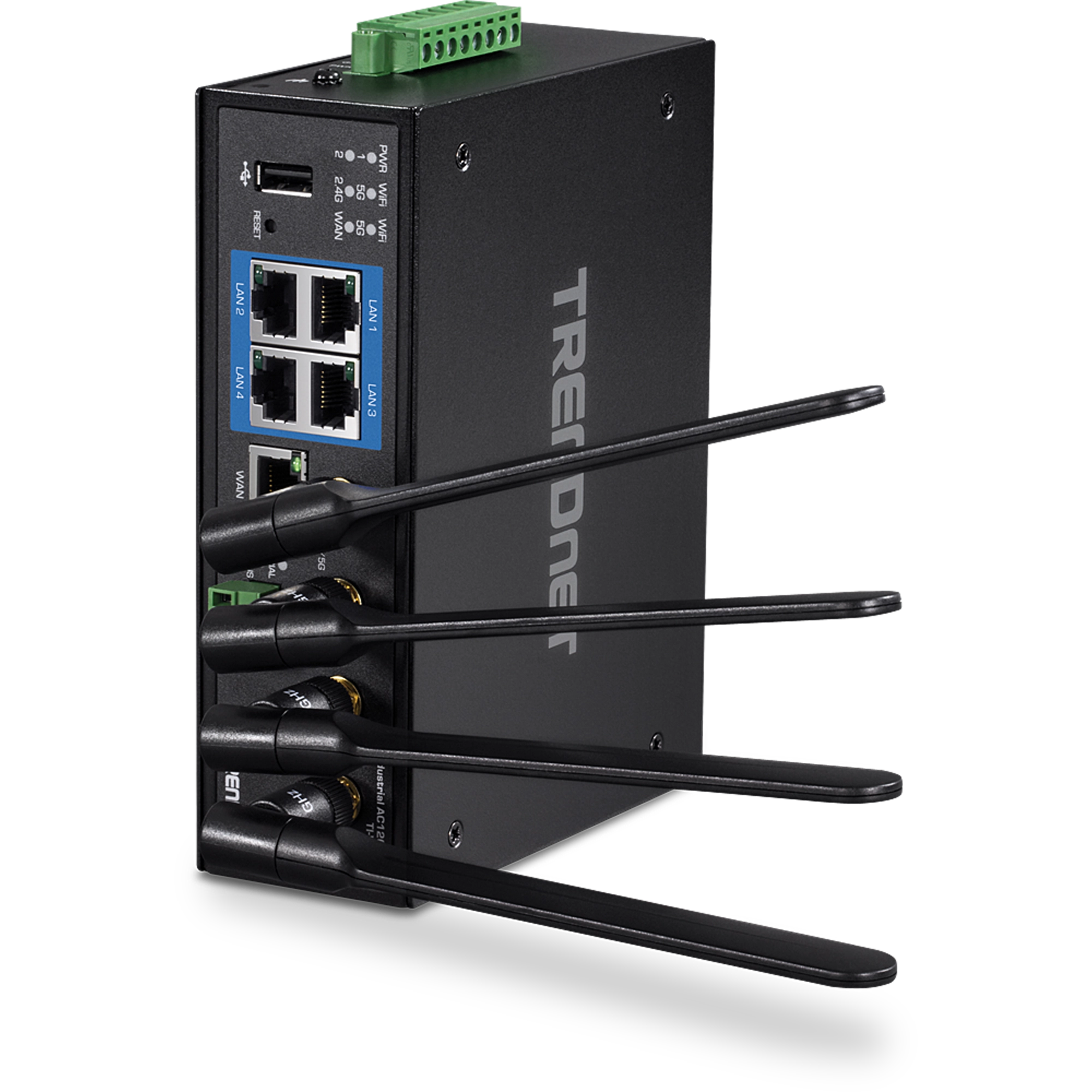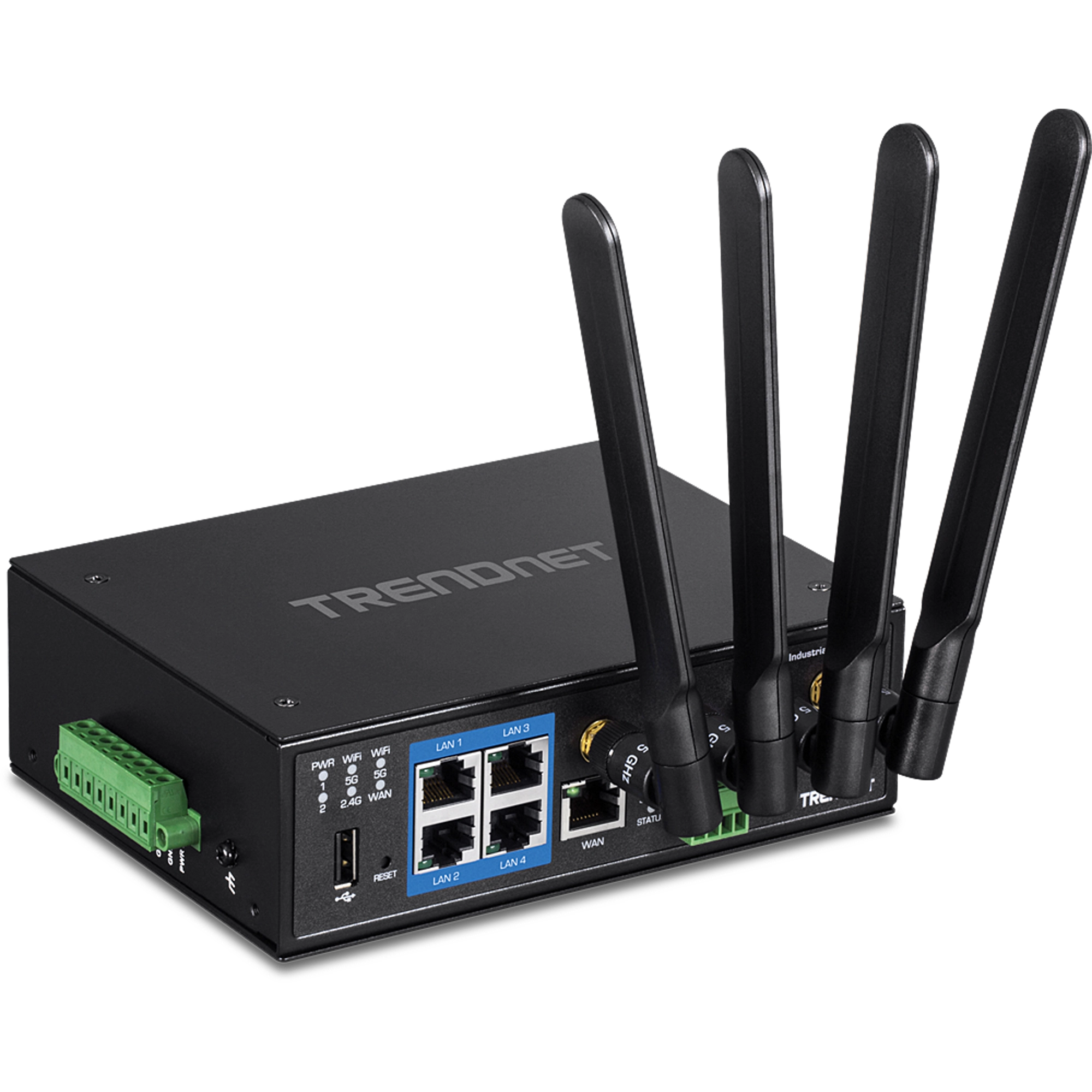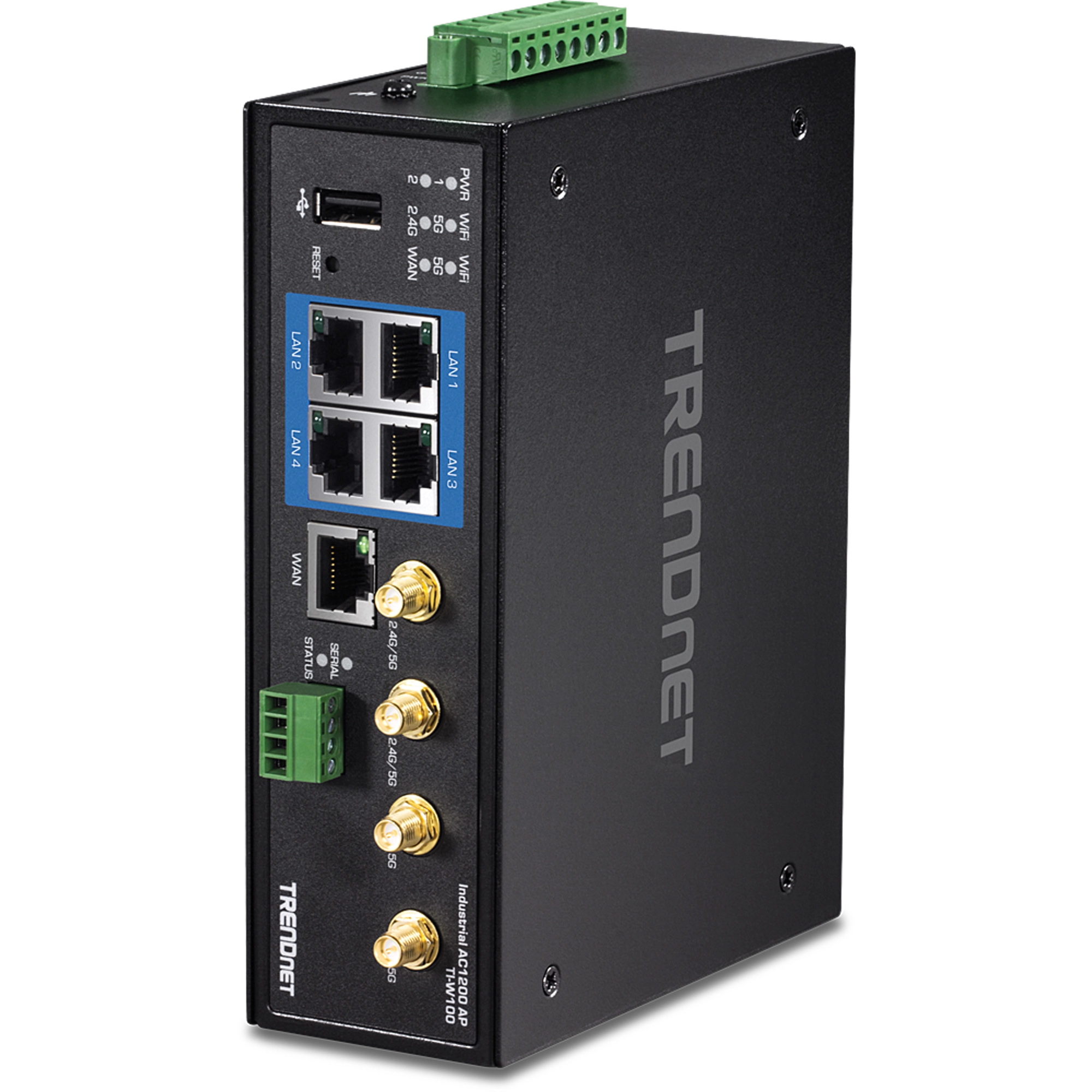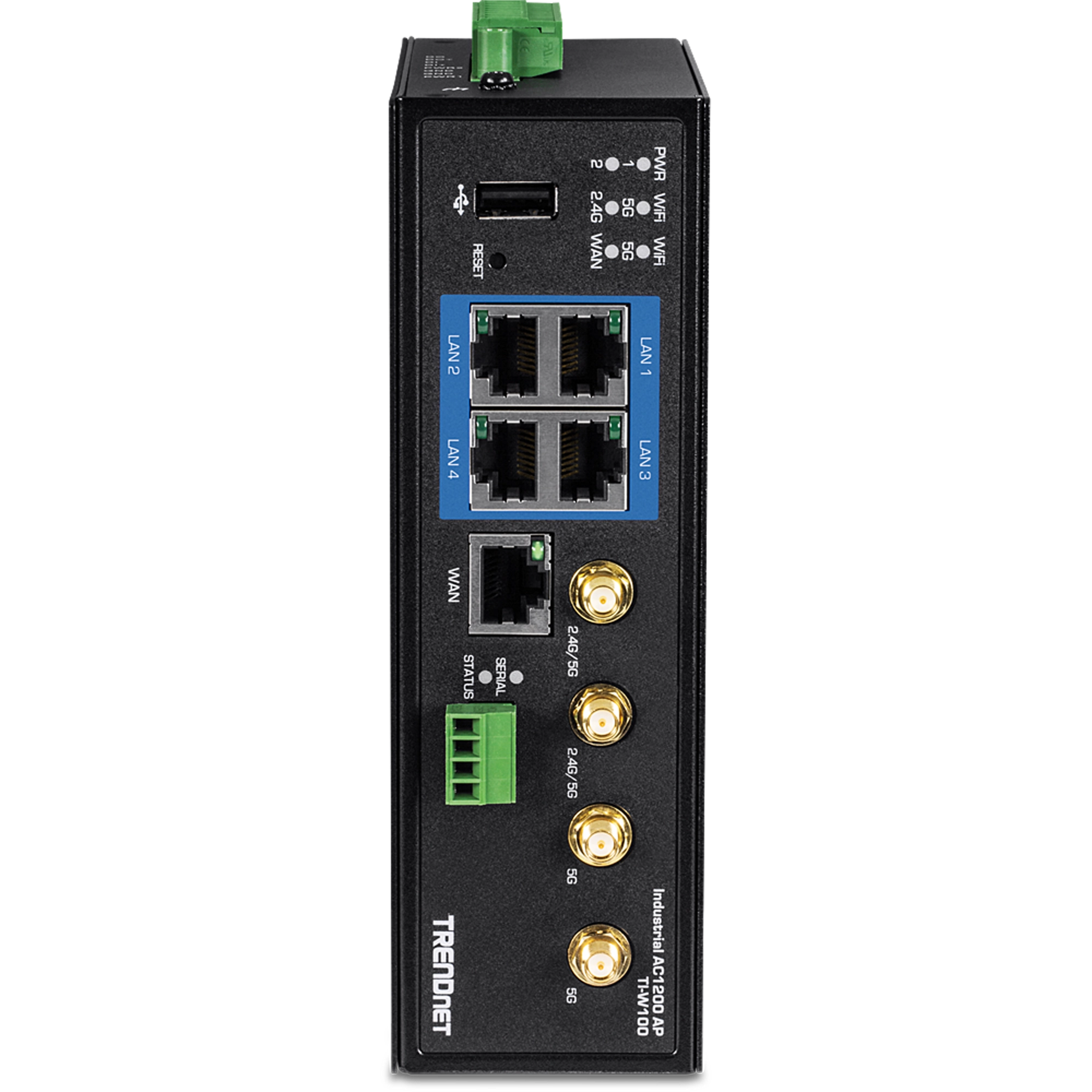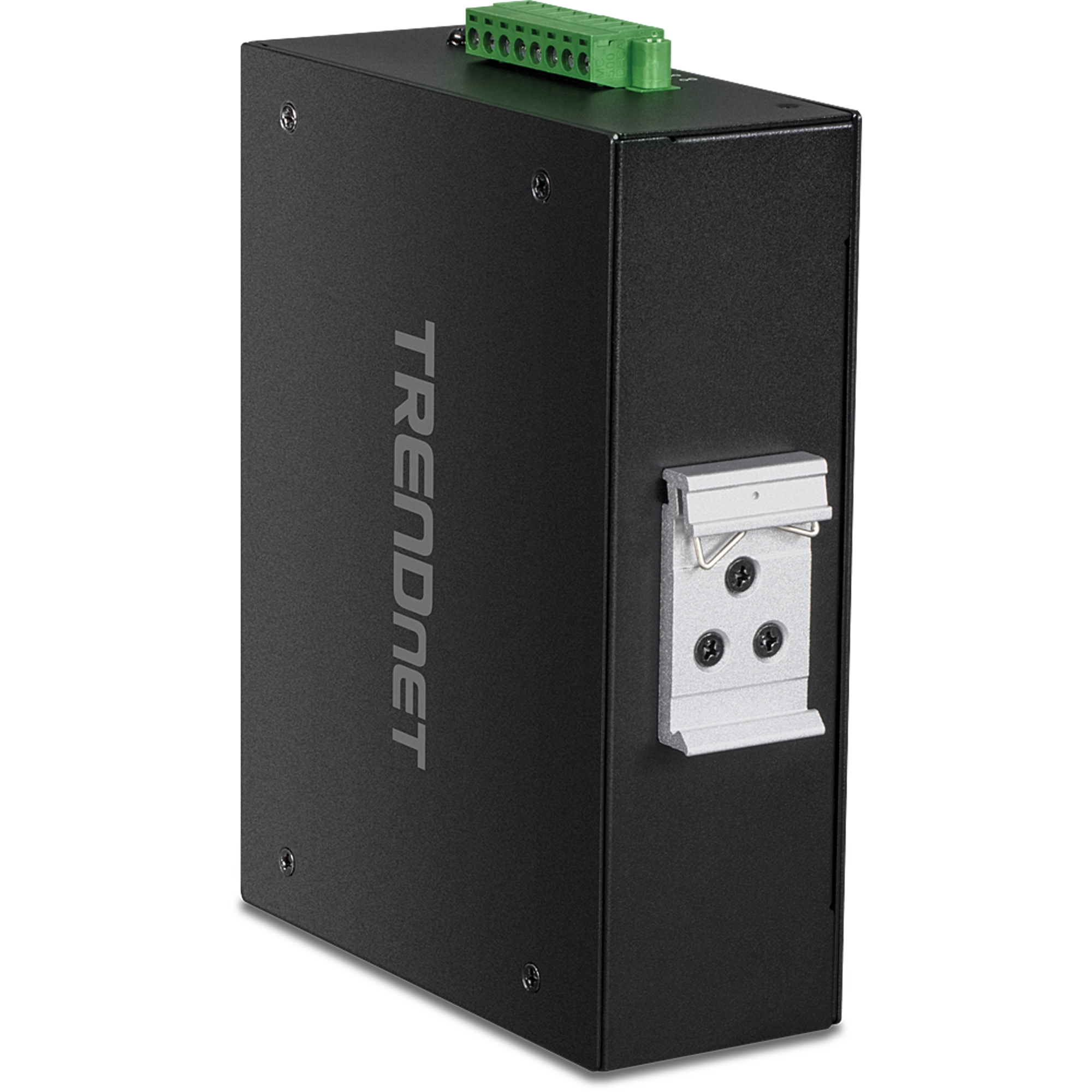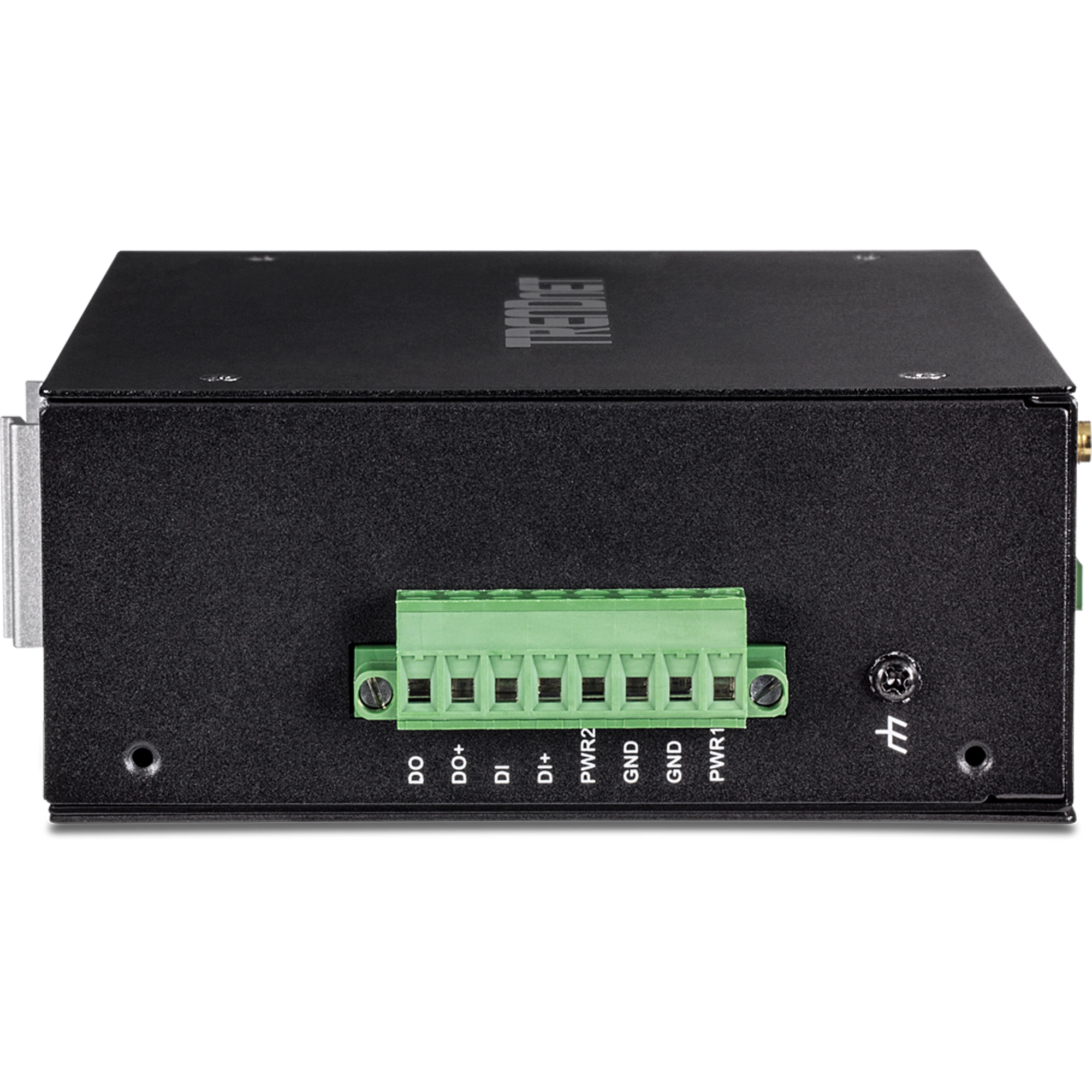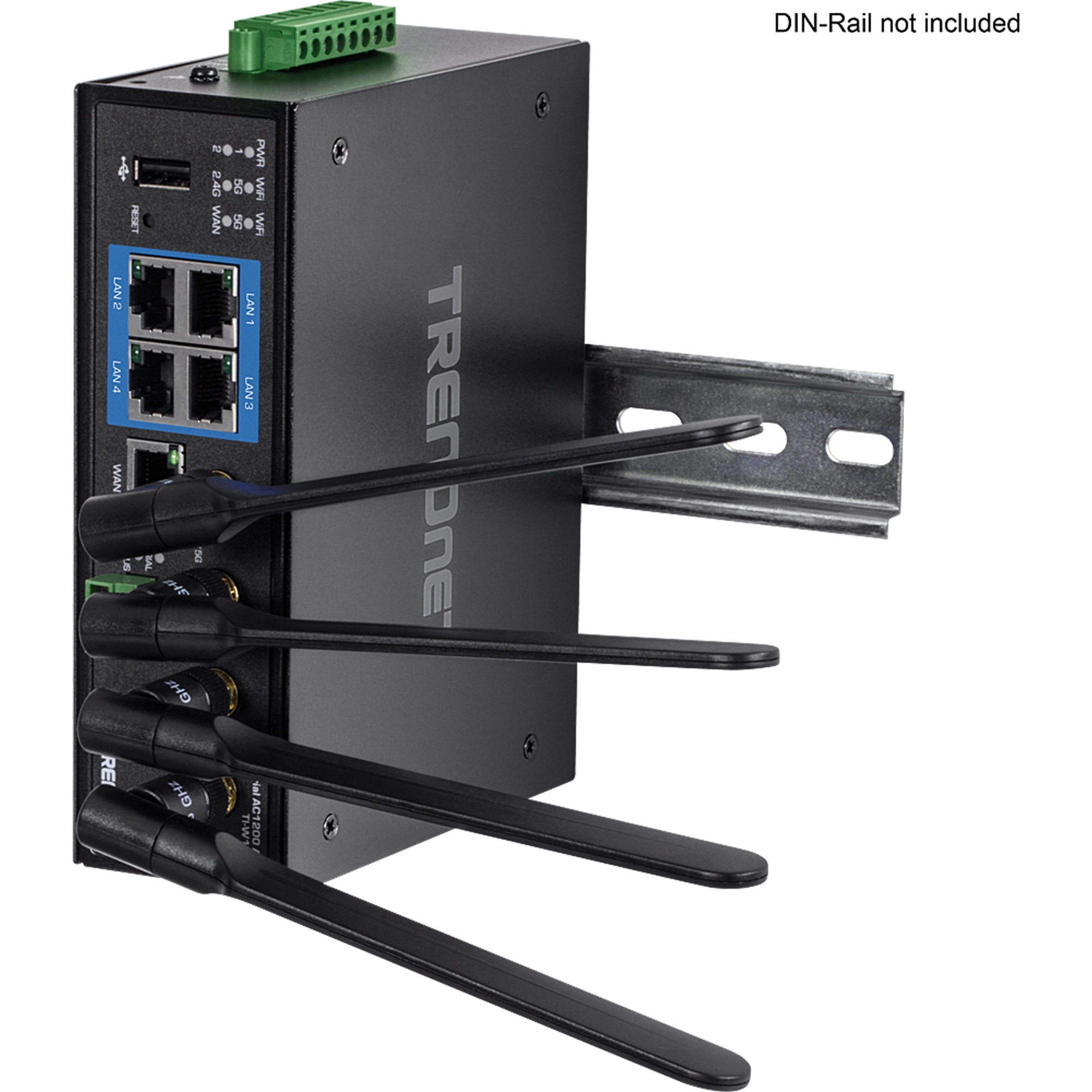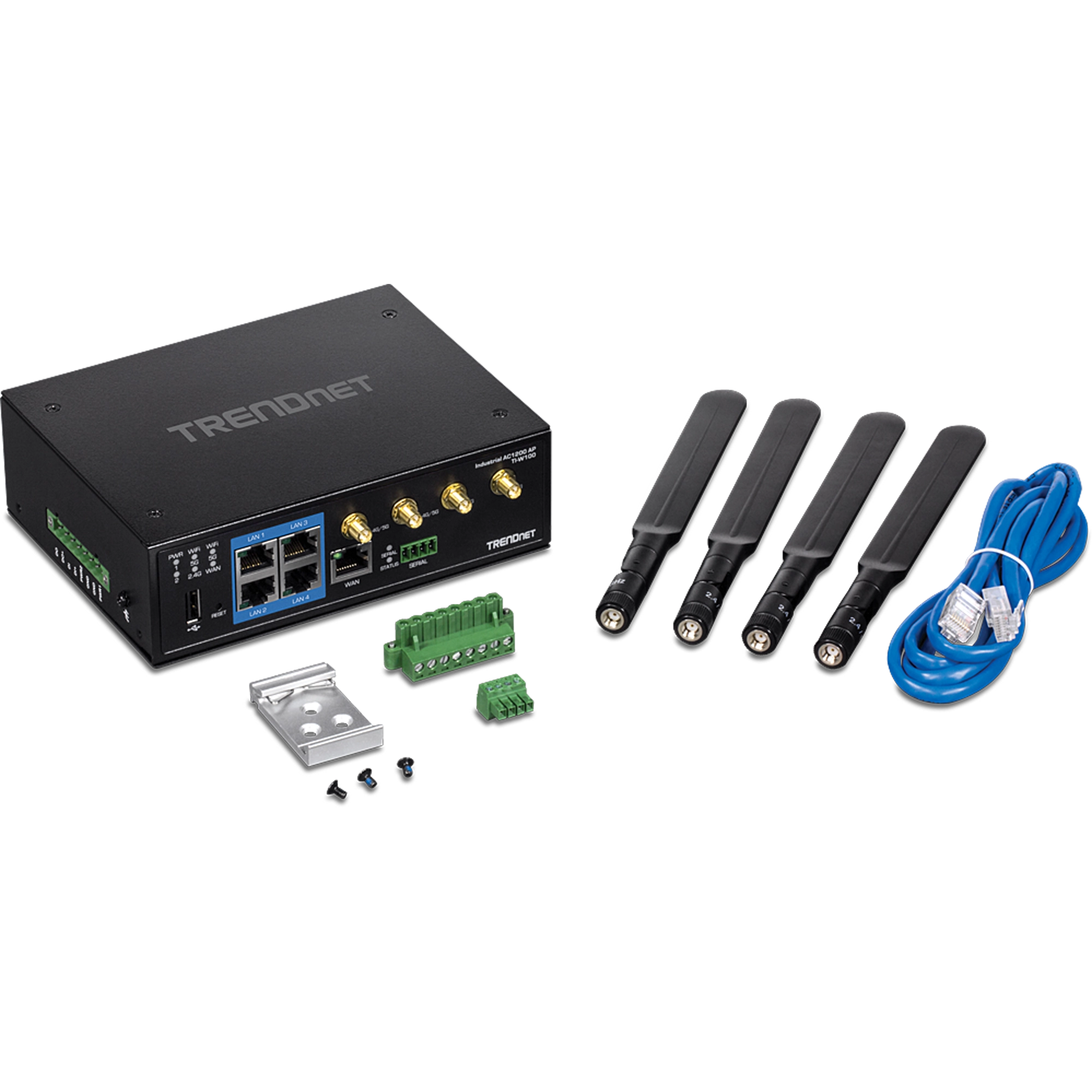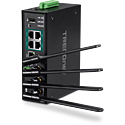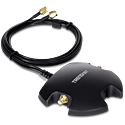Industrial AC1200 Wireless Dual Band Gigabit Router
TI-W100 (Version v1.0R)
- Industrial AC1200 Dual-Band Wireless
- 4 x Gigabit ports, 1 x Gigabit WAN port
- Hardened IP30 rated metal housing
- Operating temperature range of -30° – 70° C (-22° – 158° F)*
- Up to 8 SSIDs per band
- SSID to VLAN mapping
- Wireless WAN support (WAN load balancing/failover between wired Ethernet WAN and Wireless WAN)
- 802.1Q/Port-based VLAN support
- Inter-VLAN routing
- IPsec & SSL VPN (OpenVPN) support
- Redundant power inputs with overload current protection
- Digital input/output
- Modbus serial port and virtual COM support
- Power supply sold separately (model: TI-M6024)
- Optional Magnetic WiFi Antenna base, model TEW-LB101 (sold separately)
- NDAA / TAA compliant (U.S. and Canada only)

TRENDnet’s Industrial AC1200 Wireless Dual Band Gigabit Router, model TI-W100, features dual-band AC1200 WiFi to maximize device networking speeds; it is equipped with an 867Mbps Wireless AC network, and a 300Mbps Wireless N network. The industrial WiFi router supports dual-WAN hybrid connections (Ethernet & WiFi) for load balancing or fail-over modes, and encrypted Virtual Private Network (VPN) access for remote users. This industrial grade router is equipped with an IP30 rated metal housing, and designed to operate within a wide temperature range of -30° – 70° C (-22° – 158° F) for rugged industrial environments.
Advanced traffic management controls, troubleshooting, and SNMP monitoring support make this industrial WiFi router a powerful solution for SMB networks. The industrial wireless router features advanced management, QoS, VLAN, VPN, and other capabilities to ensure optimal performance, scalability, and protection of your network. Intelligently manage your offices’ web access with our advanced contenting filtering tool, increase employee productivity, and finally take control of your internet.

Dual-WAN
Connect up to two separate WAN internet connections (Ethernet & WiFi) to efficiently load-balance traffic, or configure for redundancy using the WAN fail-over mode.

VPN
Supports IPsec and SSL VPN protocols for encrypted remote access to local area network (LAN) resources over the internet.

AC1200 WiFi
Features dual-band AC1200 WiFi to maximize device networking speeds; it’s equipped with an 867Mbps Wireless AC network, and a 300Mbps Wireless N network.
_1.png)
_1.png)
Dual-WAN
Connect up to two separate WAN internet connections (Ethernet & WiFi) to efficiently load-balance traffic by distributing network traffic over the wired and wireless WAN connections, or configure for redundancy using the WAN fail-over mode
Pre-Encrypted Wireless
For your convenience the industrial WiFi router’s WiFi bands are pre-encrypted with their own unique passwords
Dual-Band WiFi
Concurrent 867Mbps WiFi AC and 300Mbps WiFi N combined with AP Router, WDS, and WDS Hybrid modes support multiple applications
Ports
4 x Gigabit PoE+ ports, 1 x Gigabit WAN port
VPN
Supports IPsec and SSL VPN protocols for encrypted remote access to local area network (LAN) resources over the internet
Inter-VLAN Routing
Provides routing capabilities between VLANs
QoS
Intelligently prioritize voice, video, and other data traffic to improve network efficiency and overall performance
DIN-Rail Mount
Metal enclosure with integrated DIN-rail mount
Management
Supports web browser (HTTP, HTTPS), CLI (Telnet / SSHv2), SNMP, and TR-069 management
Wide Temperature Range
The industrial WiFi router features a wide operating temperature range of -30° – 70° C (-22° – 158° F)*, allowing for installations in extreme hot or cold environments
| Standards |
|
|---|---|
| Device Interface |
|
| Performance |
|
| VPN |
|
| Networking |
|
| Access Control |
|
| Quality of Service |
|
| Management |
|
| MIB |
|
| Frequency |
|
| Modulation |
|
| Media Access Protocol |
|
| Antenna Gain |
|
| Wireless Output Power (max output power without antenna gain) |
|
| Receiving Sensitivity |
|
| Wireless Channels |
|
| Power |
|
| Terminal Block |
|
| Enclosure |
|
| MTBF |
|
| Operating Temperature |
|
| Operating Humidity |
|
| Dimensions |
|
| Weight |
|
| Certifications |
|
| Warranty |
|
PACKAGE CONTENTS |
|
*WiFi performance will be degraded if device ambient temperature is above 60° C.
**Maximum wireless signal rates are referenced from IEEE 802.11 theoretical specifications. Actual data throughput and coverage will vary depending on interference, network traffic, building materials and other conditions. For maximum performance of up to 867Mbps use with a 867Mbps 802.11ac wireless adapter. For maximum performance of up to 300 Mbps, use with a 300 Mbps 802.11n wireless adapter.


